A fleet of gamma-ray burst detecting cubesats could help crack mystery of neutron star mergers

A miniature cubesat built by Eastern European astronomers has been detecting gamma-ray bursts since 2021.
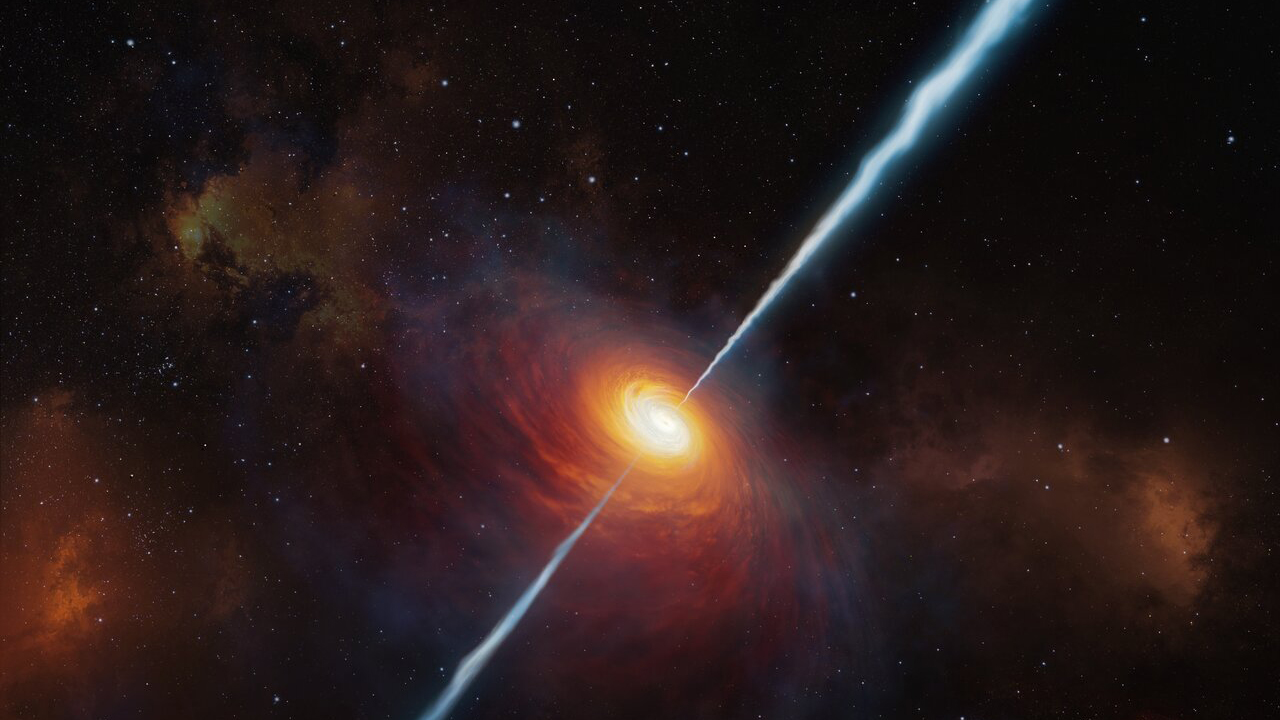
A constellation of tiny satellites could revolutionize the study of the most energetic explosion in the cosmos and help astronomers untangle the mysteries of colliding stellar remnants that produce powerful gravitational waves.
In 2016, a group of Eastern European astronomers and space enthusiasts met in Hungary's capital Budapest to discuss new ideas to do ground-breaking science. That is, to do ground-breaking science the Eastern European way: With tiny budgets and a lot of resourcefulness. Among these people were astronomers András Pál, a senior research fellow at Budapest's Konkoly Observatory, and Norbert Werner, at that time newly appointed as the head of the "Hot Universe" research group at Budapest's Eötvös Loránd University. In his late 30s and originally from the neighboring Slovakia, Werner had just returned to his native corner of the world after an eight-year stint at California's famed Stanford University.
Energized by the spirit of the place that in the early 2000s had given birth to cubesats, perhaps the space industry's most game-changing innovation of recent decades, Werner wanted to find out what type of big science one could do with these cheap, easy-to-build space gadgets.
Related: Most powerful gamma-ray burst ever seen could help reveal how black holes are born

Norbert Werner is a professor of theoretical physics and astrophysics at Masaryk University in Brno, the Czech Republic. Originally from Slovakia, Werner completed his PhD at Utrecht University in the Netherlands and subsequently worked for eight years at the Kavli Institute for Particle Astrophysics and Cosmology at Stanford University in California. He is an expert in high-energy astrophysics and studies the hottest phenomena in the universe, such as intergalactic gas around black holes and giant galactic clusters.
Elusive gamma ray bursts
For these Eastern Europeans, naturally skilled in the DIY approach to make up for their lack of financial resources, cubesats appeared like a gift from the heavens. For Werner, whose interests had for years focused on the hottest places and the highest-energy phenomena that occur in the universe, it didn't take long to realize that gamma-ray bursts may be just the thing he wanted to study with these new toys.
"Gamma-ray bursts are really bright and all you need is a relatively small detector to spot them," Werner told Space.com. "You don't need anything complicated, like a good attitude control system."
Gamma-ray bursts are the highest-energy explosions known to take place in the universe. Astronomers believe that only the Big Bang produced more energy than these mysterious flashes of super-energetic photons that come from distant galaxies. Accidentally discovered in the 1960s by American satellites keeping an eye on Russia's testing of nuclear weapons (which too produce the dangerous, penetrating gamma radiation), gamma-ray bursts had long puzzled astronomers. While some last a fraction of a second, others can brighten up the sky for several minutes.
Breaking space news, the latest updates on rocket launches, skywatching events and more!
It took until the 1990s for astronomers to find that short gamma-ray bursts are likely caused by collisions of neutron stars, super-dense remnants of giant stars that prior to their death were over ten times more massive than our sun. The long-lasting bursts, astronomers believe, occur when even larger stars explode into supernovas at the end of their lives and then turn into black holes. Both of these events emit jets of super energetic material that illuminate the surrounding universe like the beam of a flashlight. Satellites orbiting Earth only detect a gamma-ray burst when this flashlight is directed toward our part of the cosmos, but detecting a gamma-ray burst is not a rare event. Almost every day, one flashes briefly at our planet from somewhere in the universe. Many more are believed to take place throughout the cosmos that go undetected because the "flashlight" is not aimed at us.
But because gamma-ray bursts are so fleeting, astronomers don't always manage to locate their source. In fact, only about 30% of detected gamma-ray bursts get tracked to their origins, a problem Werner thought his cubesats could solve.
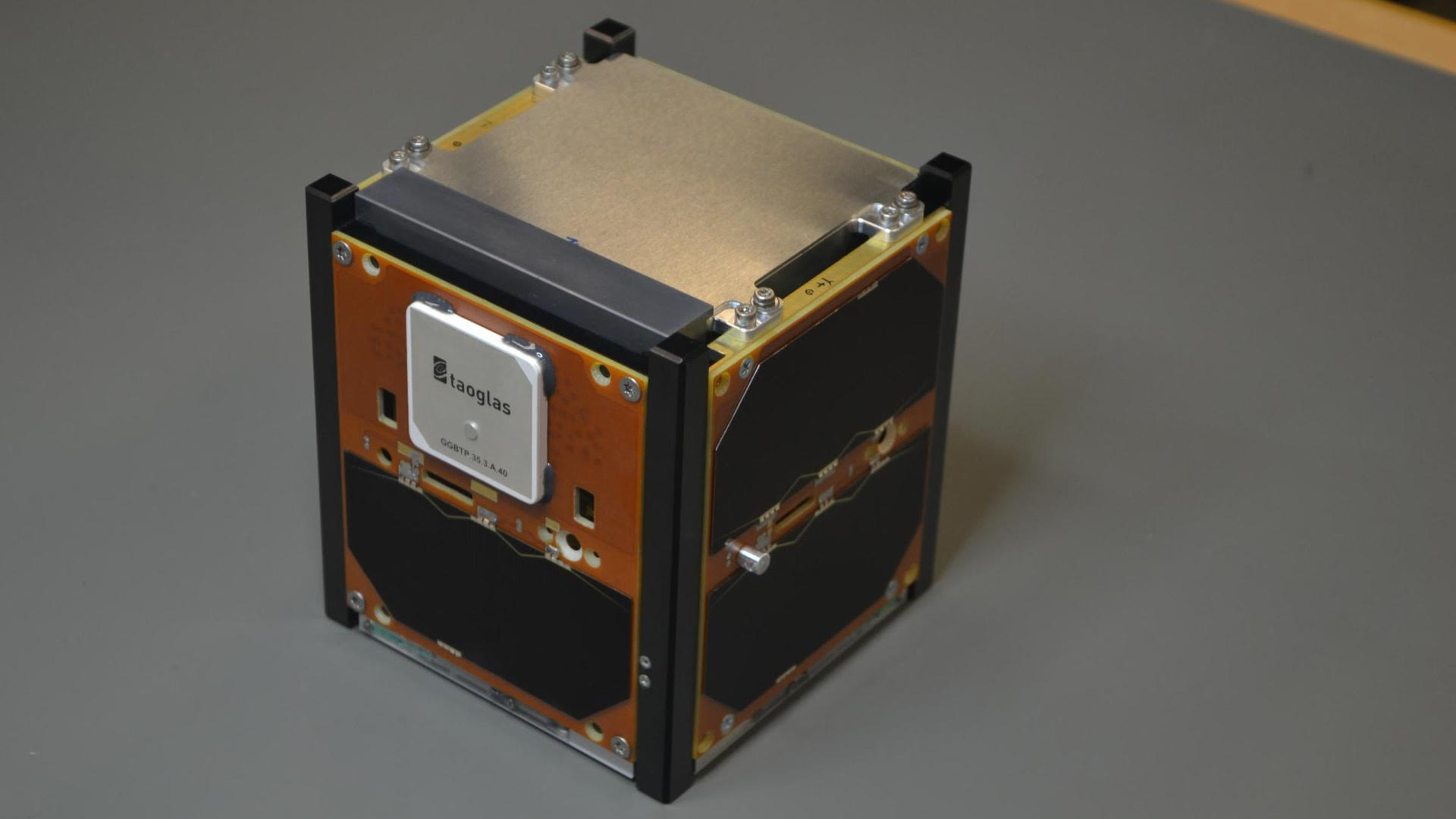
The aging fleet of gamma-ray burst watchers
The European Space Agency's Integral mission, which celebrated two decades in orbit in October last year, and NASA's nearly 15-year-old Fermi are the current flagship gamma-ray burst spotters. Optimized to detect super high energy gamma radiation, which is billions of times more energetic than what human eyes can see, these two spacecraft together detect the vast majority of gamma-ray bursts aimed at Earth. However, Werner said, they don't do a very good job finding the source of those flashes. Another NASA spacecraft, Swift, just a year and a half short of its 20th birthday, is equipped to find the source of gamma-ray bursts. Swift, however, only sees about one ninth of the sky. And since gamma-ray bursts are distributed evenly all over the universe, Swift only detects a small fraction of them.
"It misses 8 out of 9 gamma-ray bursts," said Werner. "We don't have a mission that would cover the full sky and also provide localization."
Astronomers want to know where gamma-ray bursts come from so that they can point other types of telescope toward those sources, and study the aftermath of the cataclysmic events that produced them.
Werner's and Pál's brainstorming soon moved beyond a single cubesat. They envisioned a whole constellation, which, they thought, could make up for the shortcomings of the existing, aging gamma-ray burst-detecting fleet.
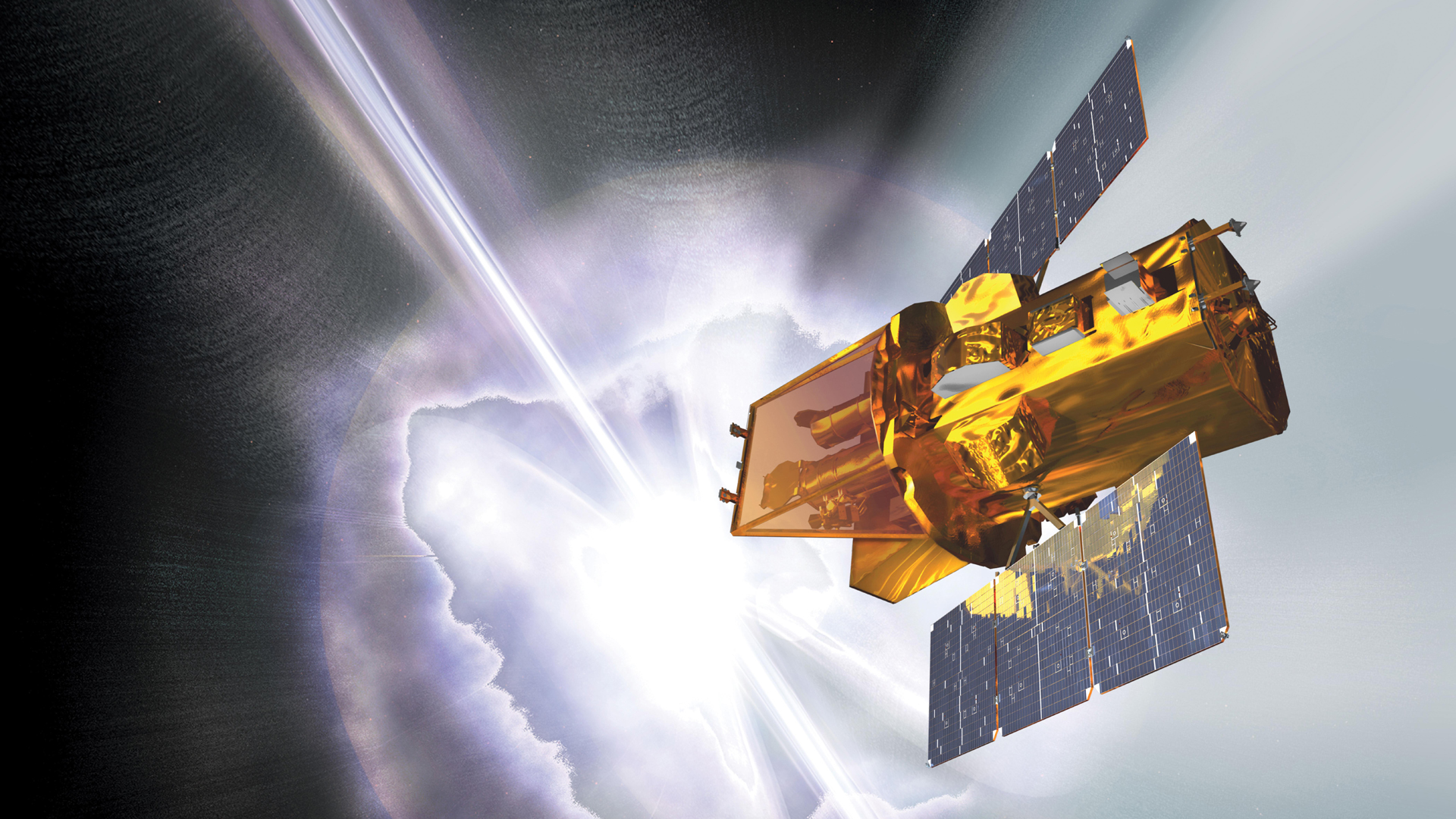
A GPS for gamma-ray bursts
"It occurred to us that if you have a constellation of cubesats, then you can cover the whole sky," Werner said. "That's a big advantage compared to the big monolithic missions. The second advantage is that you can measure the difference in time between when the different cubesats detect the gamma-ray burst and you can triangulate the position of the gamma-ray burst on the sky."
By 2018, the two managed to persuade the Hungarian Academy of Sciences to fund a development of a new detector that would fit on a 1U cubesat, the smallest type of cubesat measuring only 3.9 by 3.9 by 3.9 inches (10 by 10 by 10 centimeters) in size. Other partners jumped on board including researchers from the Technical University of Košice in Werner's native Slovakia and scientists from Japan's Hiroshima University. In March 2021, the world's first gamma-ray burst-detecting cubesat, called GRBAlpha, shot off to space from the Baikonur Cosmodrome in Kazakhstan squeezed inside the fairing of Russia's Soyuz rocket together with a bunch of other small satellites including the debris removing experiment ELSA-D of the Japan-headquartered firm Astroscale.
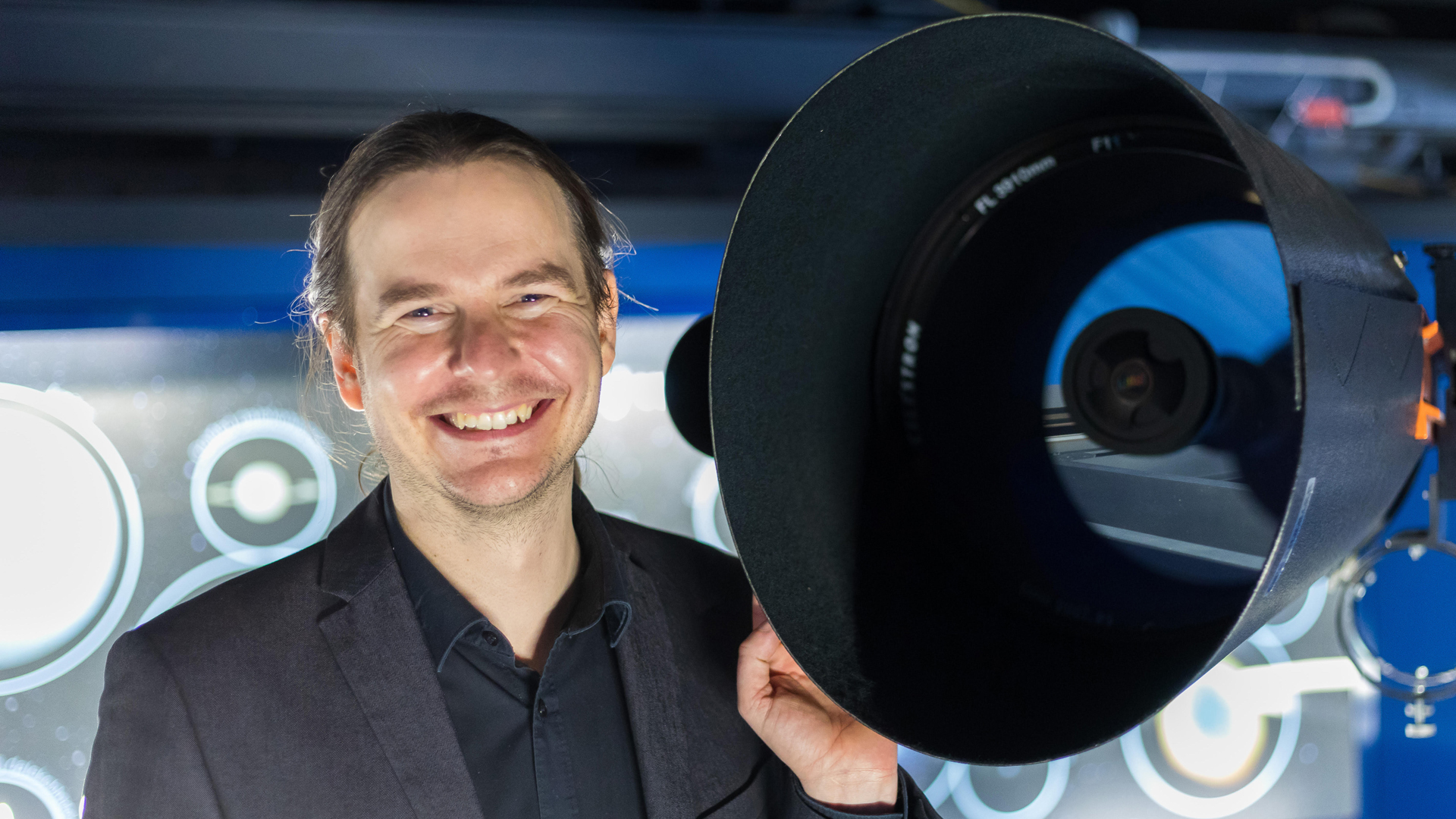
The smallest astrophysical observatory in the world
Since then, GRBAlpha, which Werner refers to as "the smallest astrophysical satellite ever," has been orbiting Earth 340 miles (550 kilometers) above the planet's surface. The innovative detector bolted to the tiny satellite's surface has been exceeding the team's expectations from the start.
"The first burst was detected in August 2021," Werner said. "We were all really, really happy, because the actual detection of gamma-ray bursts was considered a bonus, not the main goal. The main goal was the in-flight demonstration of the detector, which contained new technology."
Since then, GRBAlpha has detected 22 gamma-ray bursts.
In the meantime, in 2020, Werner relocated yet again. This time to Brno, a city in the Czech Republic, yet another country from the central-eastern European post-communist cluster that is now part of the European Union. Barely 40 years old at that time, Werner was appointed a professor of theoretical physics and astrophysics at Brno's Masaryk University, and quickly won the support of the country's small-but-eager space sector to add the new detectors on another mission. Three times larger than GRBAlpha, the Czech Republic's VZLUSAT-2 has been orbiting Earth since January 2022, having scored 12 gamma-ray bursts since then. And thus, the foundation of Werner's and Pál's constellation came into being.
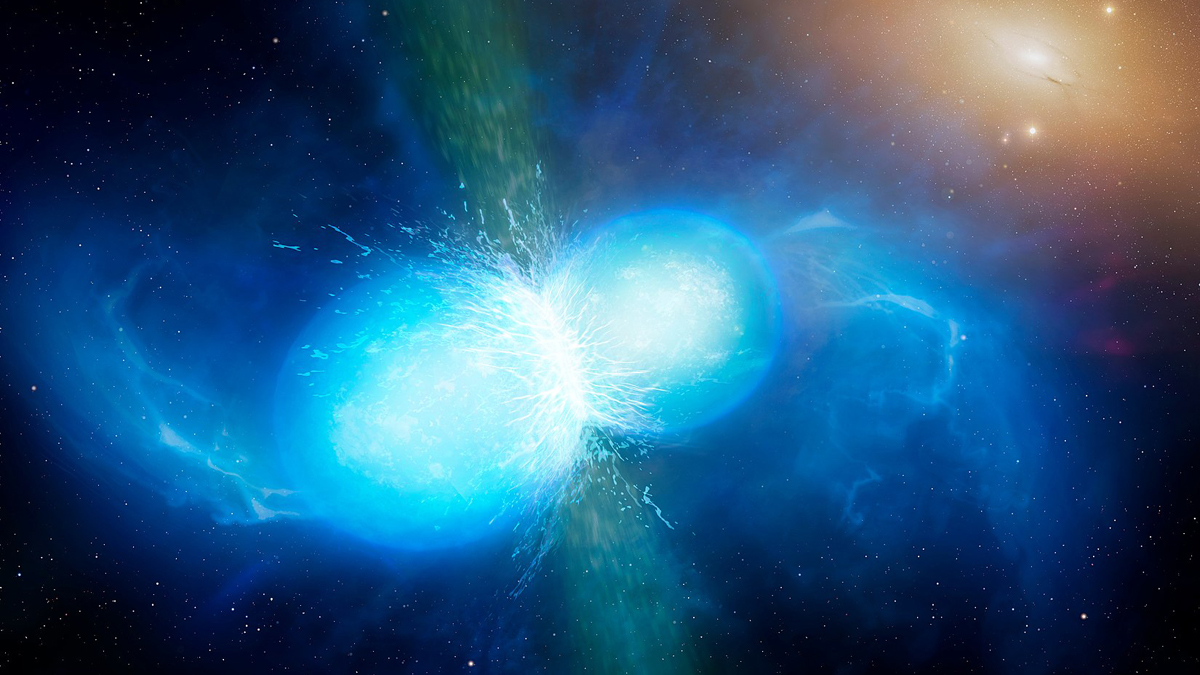
Decoding the mysteries of neutron stars
Werner's interest in gamma-ray bursts goes beyond tracking down their sources. In addition to these powerful flashes of light, colliding neutron stars (and possibly supernova explosions too) produce another fascinating phenomenon: Gravitational waves.
First predicted by the iconic physicist Albert Einstein in 1916, gravitational waves are ripples in spacetime that arise from the interplay of gravitational forces of two or more supermassive objects, such as neutron stars and black holes. Across the universe, these objects frequently get pulled into each other's sphere of gravitational influence and start orbiting each other. Gradually, they spiral closer and closer to each other and eventually collide, the collision producing a gravitational tsunami that can be detected from Earth by gravitational wave detectors such as the American LIGO (The Laser Interferometer Gravitational-Wave Observatory) and the European Gravitational Observatory Virgo.
Having made its first ground-breaking gravitational wave detection in 2015, LIGO is currently undergoing upgrades and will start its next observing run later this year.
"For these further runs of the gravitational wave detectors, we need a gamma-ray burst-monitoring system that will allow us to see whether these gravitational wave events do produce observable counterparts in gamma-ray bursts," Werner said. "Especially in the neutron star mergers, it is important to see whether there was a gamma-ray burst or not because only a small fraction of those jets that produce the gamma-ray burst should be aimed at us."
Apart from their limited ability to detect the sources of gamma-ray bursts, Swift, Integral and Fermi are all way past their originally planned lifetimes. Replacing them with new, large space telescopes would take years and cost hundreds of millions of dollars. In comparison, the constellation envisioned by Werner and Pál would come with a friendly price tag of only about 10 million dollars and could be up and running within less than three years, Werner said.
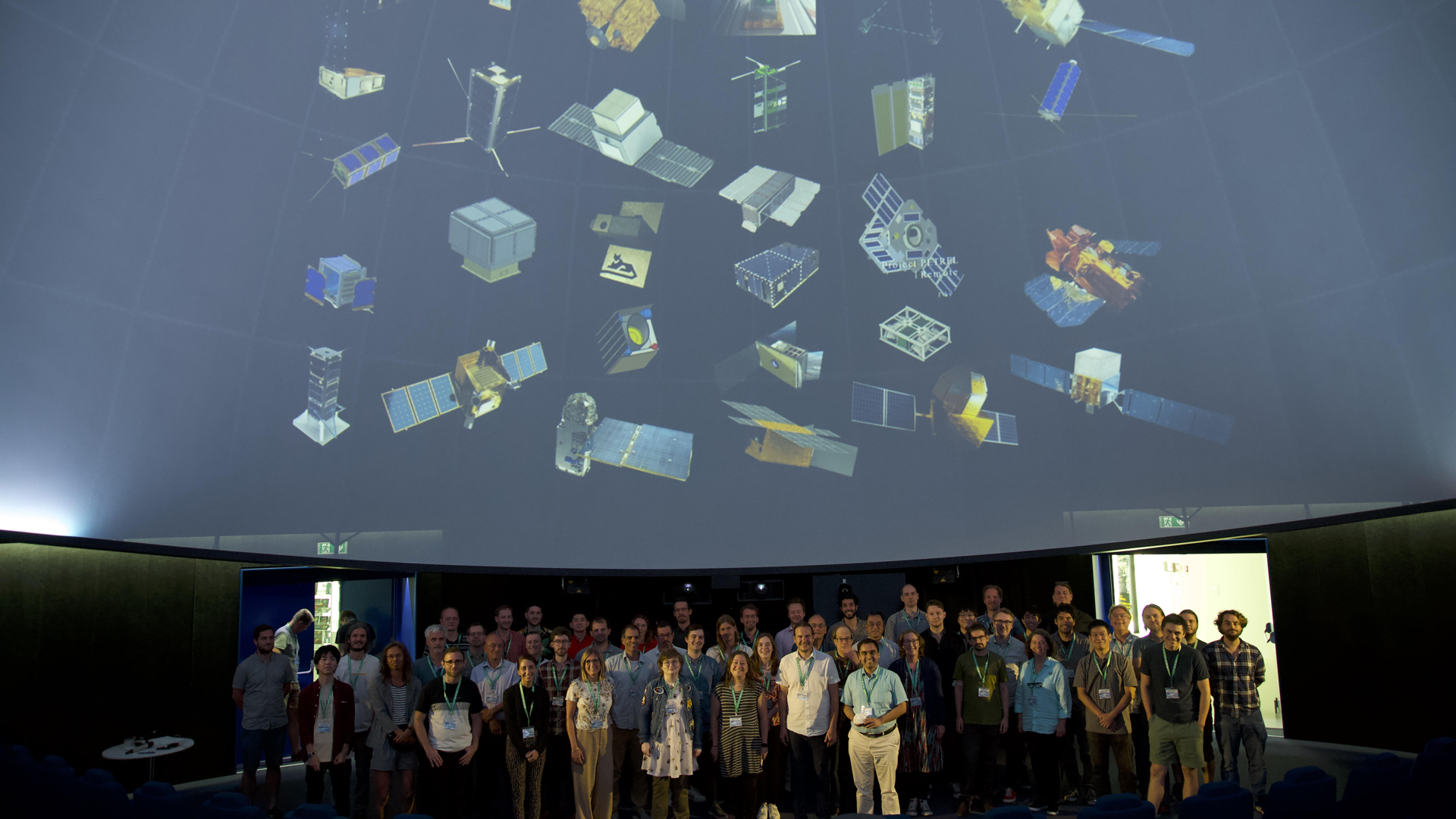
An international endeavor
Soon after their first discussion, Werner and Pál found out they weren't alone in recognizing the potential of cubesats for the detection of gamma-ray bursts.
An Italian project called HERMES won European Union funding in 2018 to build and launch a constellation of six gamma-ray burst-detecting 3U cubesats (three times larger than the tiny, pioneering GRBAlpha). The first of these spacecraft is expected to launch in the second half of 2024, Fabrizio Fiore, the HERMES project coordinator and astronomer at Italy's National Institute for Astrophysics, told Space.com in an email. Prior to that, the HERMES project team will fly a hosted payload on a cubesat built by the University of Melbourne, Australia, which is set for launch at the end of 2023.
"We hope to see first data at the end of this year or beginning of 2024," Fiore wrote.
The HERMES satellites are quite a bit more sophisticated than GRBAlpha, featuring a detector sensitive to gamma-rays but also the slightly less energetic X-rays. The satellites are also equipped with a set of high-tech sensors including GPS receivers and accelerometers that will be able to report the spacecraft's positions with an accuracy of a few meters. And since there will be six of these satellites (plus the hosted payload), astronomers will be able, for the first time, to use the minuscule time difference in the arrival of the gamma-ray burst at the individual satellites, to calculate the location of the burst's source.
"The temporal resolution is of about 300 nanoseconds," Fiore wrote. "That is three to seven times better than any instrument flown so far for gamma-ray burst science."
NASA is also working on a gamma-ray burst-detecting cubesat. The BurstCube, twice as big as the HERMES satellites, is expected to launch by the end of 2023.
Werner and his colleagues, too, have a new satellite in the pipeline. GRBAlpha's somewhat larger and more complex successor GRBBeta has its ride to space booked on the debut flight of Europe's new Ariane 6 heavy-lift rocket, which is expected to take place by the end of this year.
"It seems that we all had this idea of a small satellite detecting these high-energy events in the sky at about the same time," said Werner. "Now we can all coordinate our efforts and build the constellation together. Most of these cubesats are built by small teams that have limited funding, but by working together, we can do it easier with the funding that we have."
Follow Tereza Pultarova on Twitter @TerezaPultarova. Follow us on Twitter @Spacedotcom and on Facebook.

Tereza is a London-based science and technology journalist, aspiring fiction writer and amateur gymnast. She worked as a reporter at the Engineering and Technology magazine, freelanced for a range of publications including Live Science, Space.com, Professional Engineering, Via Satellite and Space News and served as a maternity cover science editor at the European Space Agency.
